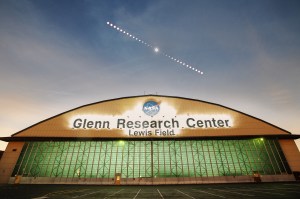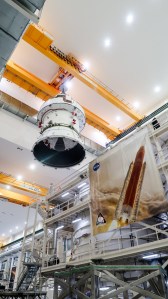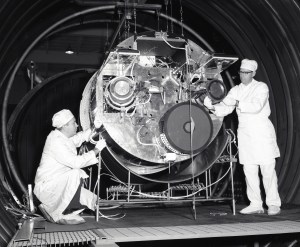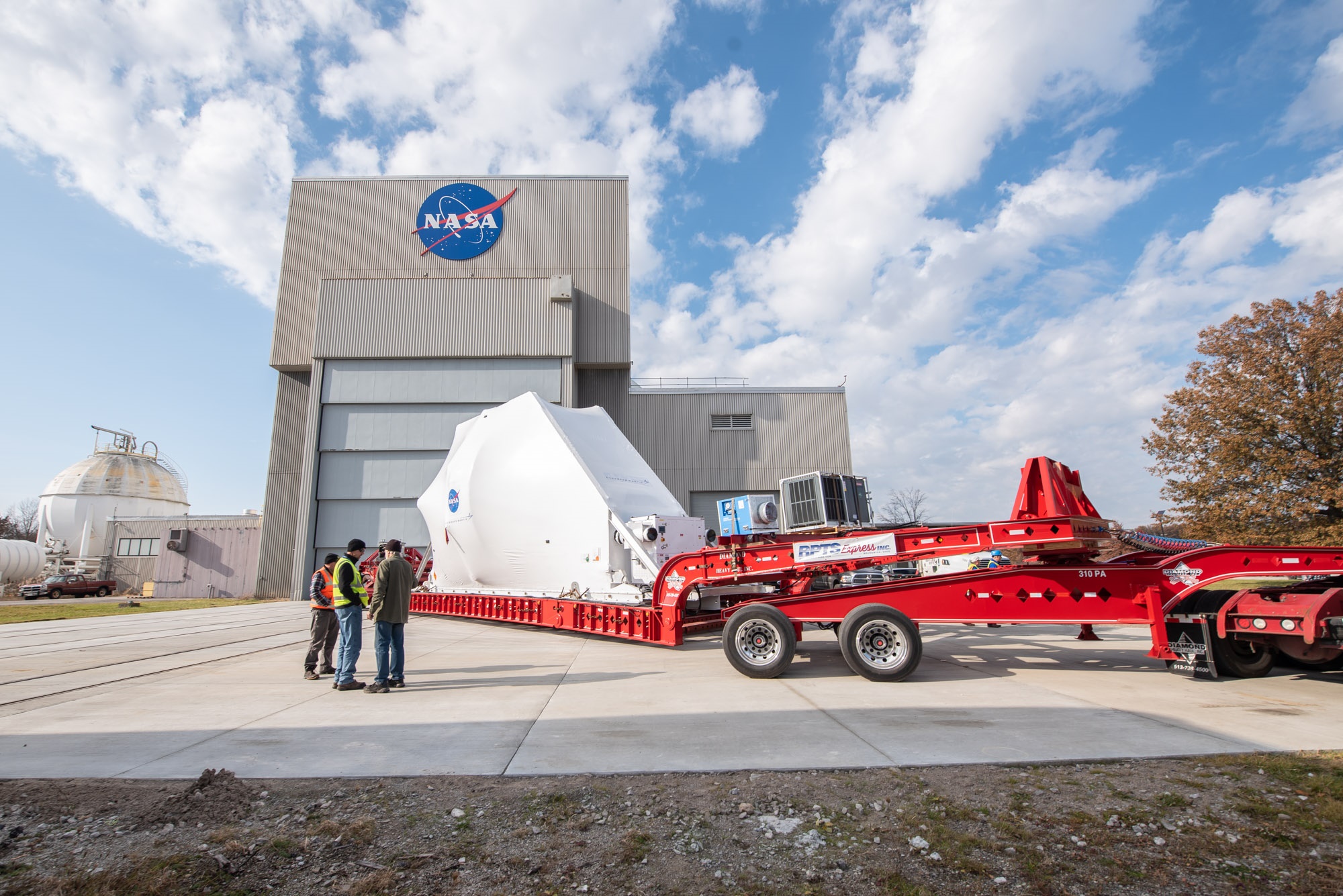
NASA’s Super Guppy flew low in the sky as it transported the Orion spacecraft to Ohio. After it touched down, a series of events began to unfold to transfer the Artemis I vehicle to NASA’s Plum Brook Station for testing. The capsule was pulled out of the belly of the Super Guppy and lifted onto a 130-foot long, 38-wheel truck that maneuvered Ohio’s back roads to get to the facility in Sandusky. This spacecraft is the largest load ever driven through the state, and more than 700 utility lines along the route were raised or moved to accommodate its massive size.
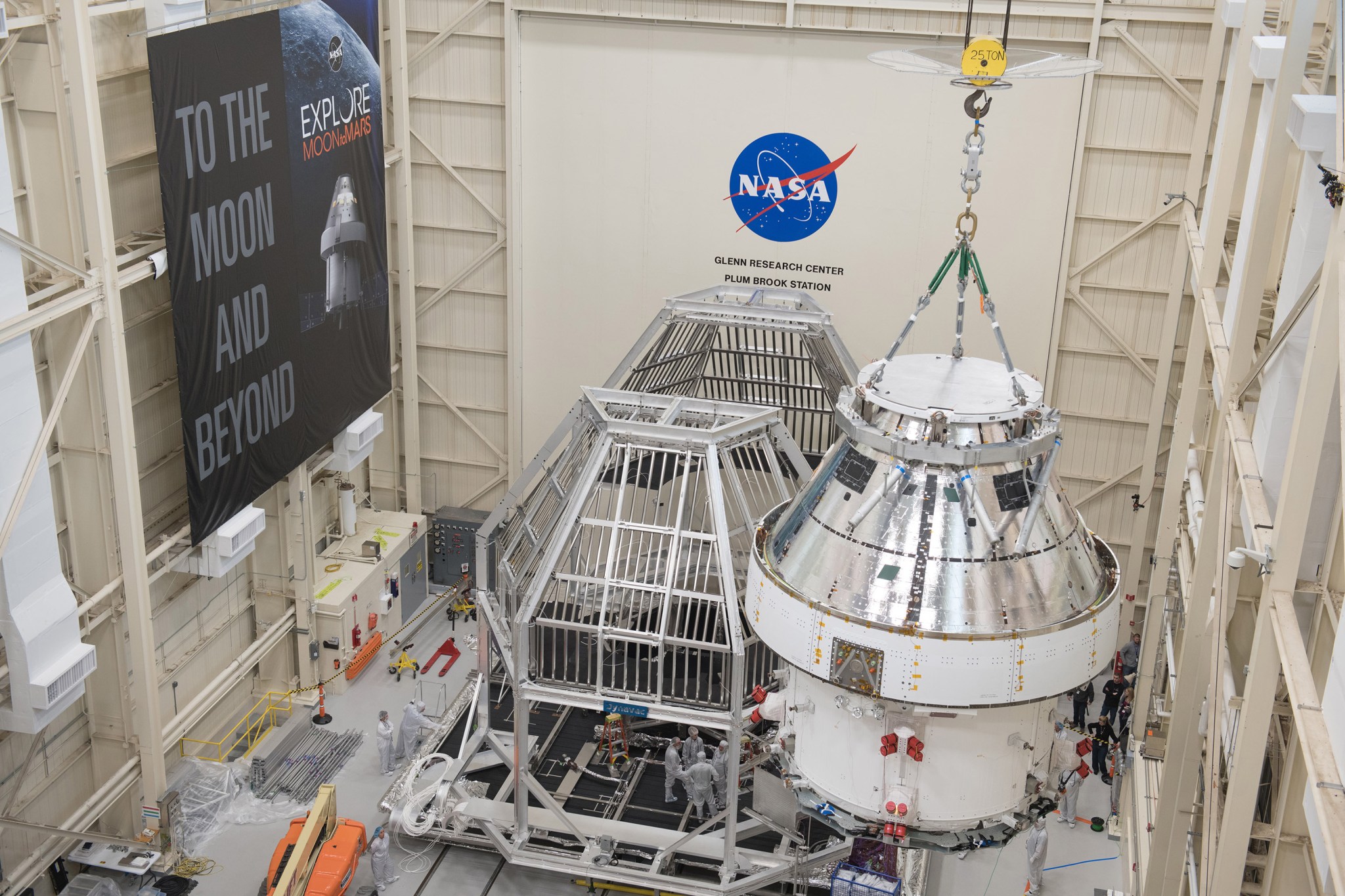
A crane hoisted the 60,000 pound spacecraft off the truck once it arrived at the Space Environments Complex and lifted the spacecraft from its side into a vertical position. After the spacecraft was in its proper orientation, the crane attached to the facility’s ceiling maneuvered Orion into the Heat Flux System—the cage encapsulating the spacecraft—for testing.
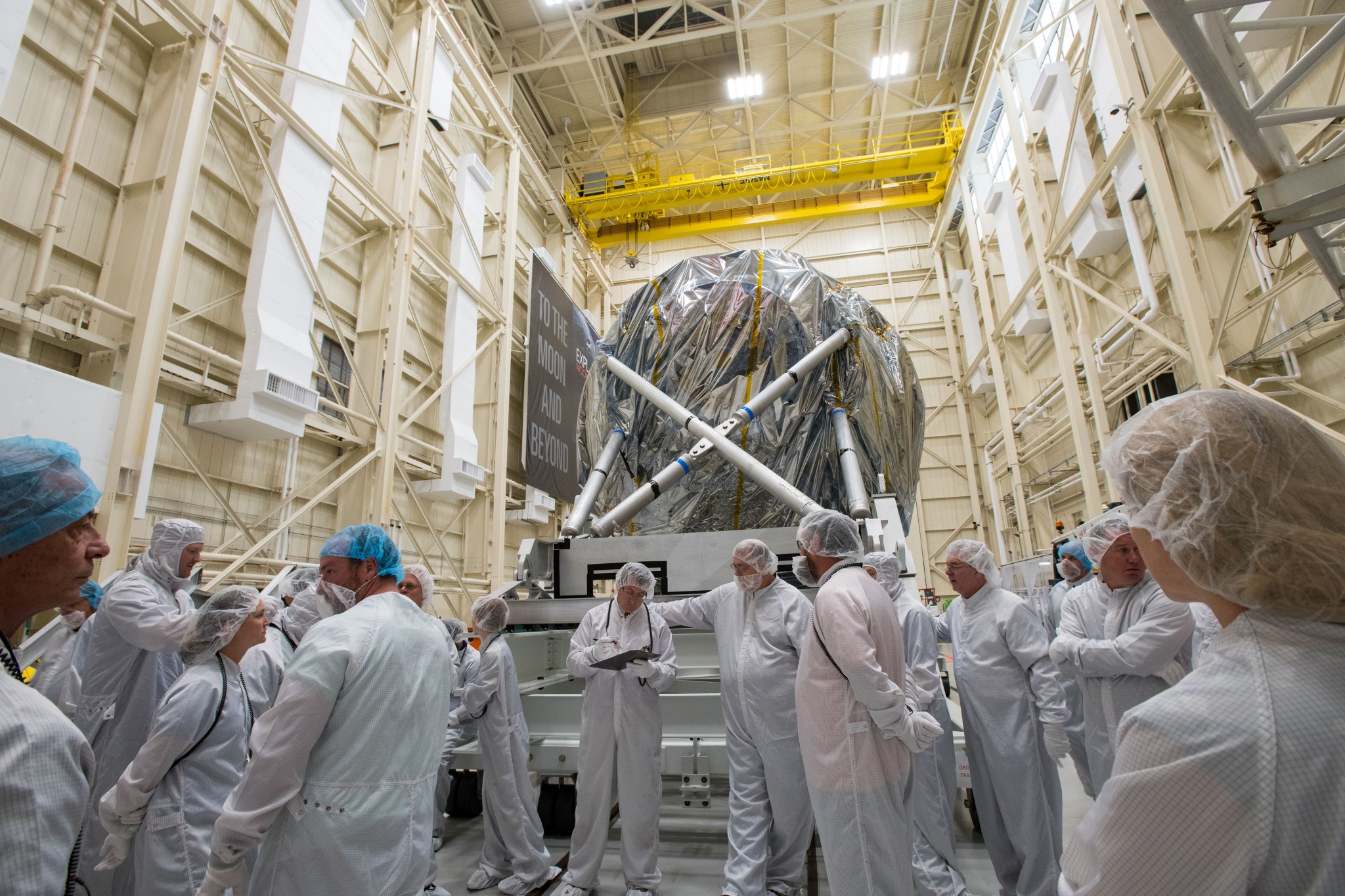
Even around the vacuum chamber, a little vacuuming is required to make sure the facility and Orion are kept extremely clean. There are two types of contamination engineers are concerned about: particulate, which you can see, and molecular, which you can’t see. Both can cause problems during the tests, but they can also be dangerous during flight. The slightest amount of dust or grease could disrupt sensors on the spacecraft’s surfaces and its sensitive navigation system. To help keep everything sterilized, every person working near the spacecraft is required to suit up from head to toe with gowns, hoods, latex gloves, shoe covers and beard covers. Even the number of particles floating around the room gets monitored.
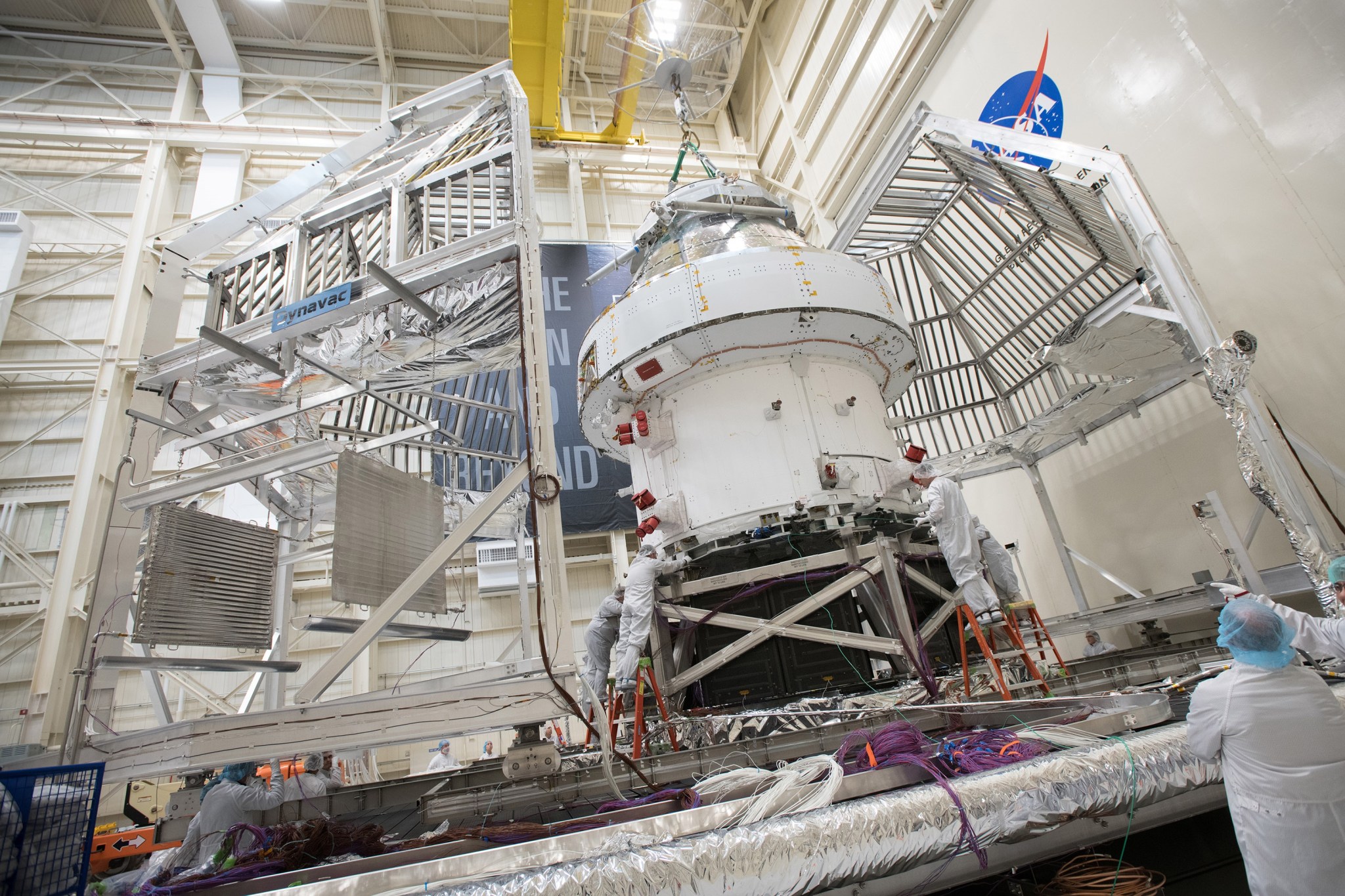
Although it looks like tin foil, the metallic material wrapped around Orion and the Heat Flux System is a material called Mylar. It’s used as a thermal barrier to help control which areas of the spacecraft get heated and cooled during testing. This helps the team avoid wasting energy heating and cooling spots unnecessarily.
It took a little over a week to prepare Orion for its thermal test in the vacuum chamber. Now begins the 63-day process of heating and cooling the capsule to ensure it’s ready to withstand the journey around the Moon and back.
View more images of Orion’s transportation and preparation here.
Katherine Herrick
NASA’s Glenn Research Center


























